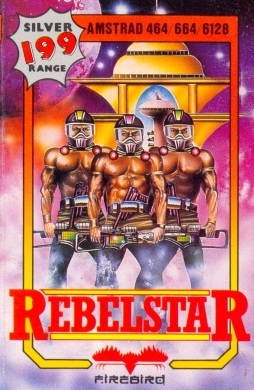
The Rebelstar games are a series of turn-based tactics video games designed by Julian Gollop. Rebelstar Raiders was published in 1984 by Red Shift for the ZX Spectrum. It was reworked in machine code as Rebelstar, published by Firebird in 1986. A sequel, Rebelstar II, was published in 1988 by Silverbird. Rebelstar, but not its sequel, was also adapted for the Amstrad CPC home computer.

Bomberman is a maze video game developed and published by Hudson Soft. The original home computer game Bomber Man was released in July 1983 for the NEC PC-8801, NEC PC-6001 mkII, Fujitsu FM-7, Sharp MZ-700, Sharp MZ-2000, Sharp X1 and MSX in Japan, and a graphically modified version for the MSX and ZX Spectrum in Europe as Eric and the Floaters. A sequel, 3-D Bomberman, was produced. In 1985, Bomberman was released for the Nintendo Entertainment System. It spawned the Bomberman series with many installments building on its basic gameplay.
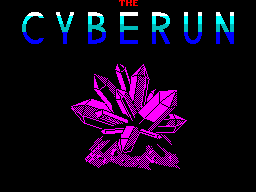
Cyberun is a ZX Spectrum video game by Ultimate Play the Game and published by U.S. Gold in 1986. Although not part of the Jetman series, it has similarities to Jetpac in that the player must construct their spaceship from parts, then seek out resources and power-ups.
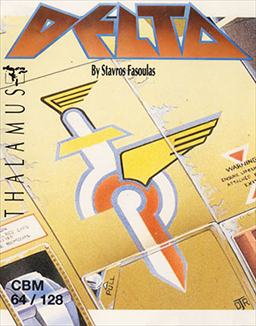
Delta is a horizontally scrolling shooter originally released for the Commodore 64 by Thalamus Ltd in 1987. It was programmed by Stavros Fasoulas and the music was written by Rob Hubbard. The menu-music is based on the theme of Koyaanisqatsi by Philip Glass and the in-game-music is based on Pink Floyd's On the Run.
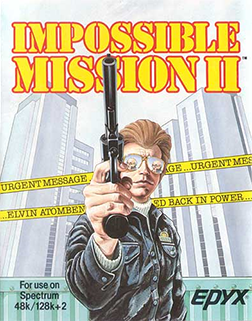
Impossible Mission II is a video game developed by Novotrade and published by Epyx in 1988. It was released for the Commodore 64, ZX Spectrum, Amstrad CPC, Enterprise 128, Nintendo Entertainment System, DOS, Atari ST, Apple II with at least 128K, Apple IIGS, and Amiga.

Nether Earth is one of the earliest computer real-time strategy games. It was released for the Amstrad CPC, ZX Spectrum and Commodore 64 in 1987. It was published in the United Kingdom by Argus Press Software and re-released in Spain by Mind Games Espana S.A.

Dan Dare: Pilot of the Future is a 1986 video game by Virgin Games for the ZX Spectrum, Amstrad CPC and Commodore 64 home computer systems. It is based on the classic British comic strip Dan Dare. The Commodore 64 version was considerably different in gameplay to the ZX Spectrum and Amstrad CPC versions.

Nonterraqueous is a computer game for the Amstrad CPC, ZX Spectrum, and Commodore 64, released by Mastertronic in 1985.

Escape from the Planet of the Robot Monsters is a multidirectional shooter released in arcades by Atari Games in 1989. The game is styled after campy science fiction B movies of the 1950s. It was ported to the Amiga, Amstrad CPC, Atari ST, Commodore 64, MS-DOS, SAM Coupé, and ZX Spectrum.
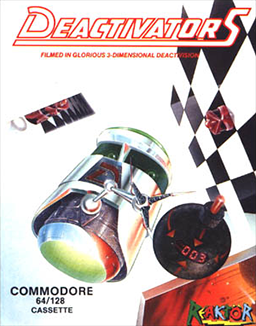
Deactivators is a 1986 puzzle video game designed by David Bishop and Chris Palmer, developed by Tigress Marketing and System Software, and published by Ariolasoft's action game imprint Reaktor. The player controls bomb disposal robots known as deactivators and must use them to deactivate bombs planted by terrorists in five research complexes. The concept for the game came from a brainstorming session between Bishop and Palmer; its design and development took five to six months to complete. It was released for the Amstrad CPC 464, Commodore 64, and ZX Spectrum platforms in October 1986.
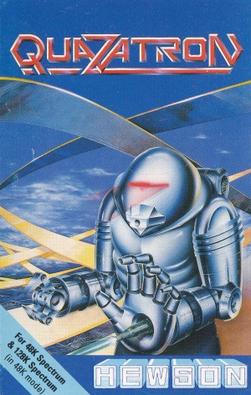
Quazatron is an action game developed by Graftgold, and released in 1986 by Hewson Consultants. It was designed by Steve Turner for the ZX Spectrum.

Starfox is a video game published by Ariolasoft on their Reaktor label in 1987 for the ZX Spectrum, Commodore 64, and Amstrad CPC. The player assumes the role of Hawkins, a space fighter pilot charged with protecting the Hyturian star system from invading alien forces. The game uses wireframe and shaded vector graphics to depict combat, in a similar fashion to games such as Elite and Starstrike 2, which were also created by Realtime Games. Ariolasoft had previously published the Electronic Arts titles Skyfox and Arcticfox and the name was chosen to build on the success of those titles. The US Commodore 64 release was titled The Rubicon Alliance.

Dark Side is a 1988 video game published by Incentive Software for the Amiga, Atari ST, Amstrad CPC, Commodore 64, IBM PC compatibles, ZX Spectrum, and Sharp MZ-800. The game is a sequel to Driller, set in the Evath system but this time on Evath's second moon Tricuspid.

Shadowfire is a video game for the ZX Spectrum and Commodore 64 and later the Amstrad CPC. It was developed by British developer Denton Designs and published by Beyond Software in 1985. The player must direct the Enigma Force to rescue Ambassador Kryxix from the traitor Zoff's flagship before the timer runs out and secret plans for a new type of starship are discovered. Shadowfire was one of the first games to use a menu-and-icon-driven interface, even with a lightpen. It was well received by reviewers of the time, and followed by a sequel, Enigma Force.

Light Force is a 1986 vertically scrolling shooter designed by Greg Follis and Roy Carter, developed by their company Gargoyle Games, and published under their Faster Than Light imprint. It was released for the Amstrad CPC, Commodore 64, and ZX Spectrum platforms.
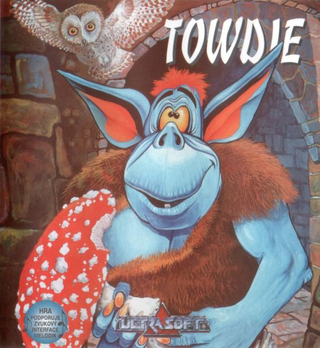
Towdie is a platform adventure game published in Europe in 1994 by Ultrasoft for the ZX Spectrum. The game, similar in style to Dizzy series, is set in a fantasy land called Alkria and follows adventures of a little restless creature called Towdie. The player controls Towdie, the titular character, who is on the mission to save the kingdom of Alkria from the evil dragon Quido.
Pocket Fleet is a space themed MOBA game developed by Turkish studio 'Overdose Caffeine Games'. The Android version was released in September 2012. followed by iOS and Flash versions. An Ouya port was also planned initially but abandoned due to porting difficulties. The game features arena type PvP and PvE game play using Asteroids-like game mechanics.

Psi-5 Trading Company is a 1985 space trading game, one of the first games published by fledgling video game developer and publisher Accolade.

Jet-Story is a 1988 video game developed by Cybexlab Software and published by Ultrasoft. The game is the sequel to Planet of Shades.
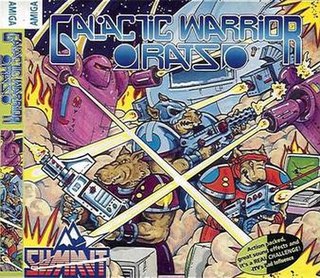
Galactic Warrior Rats is a platform game developed by Mikev Design and published by Summit Software in 1992 for the Amiga. A port to MS-DOS was released the following year. The game was included in the 1994 Famous Collection compilation.



















